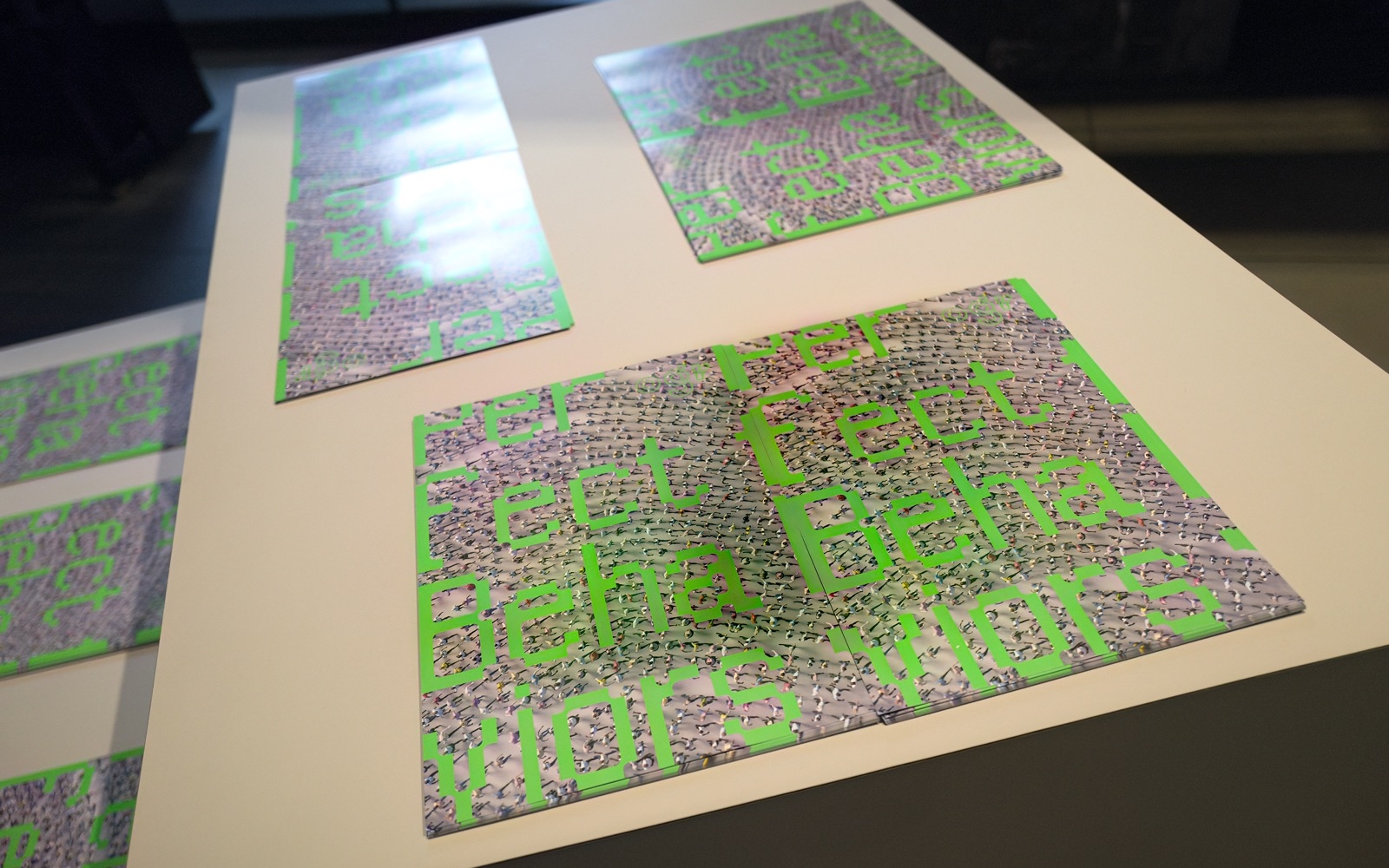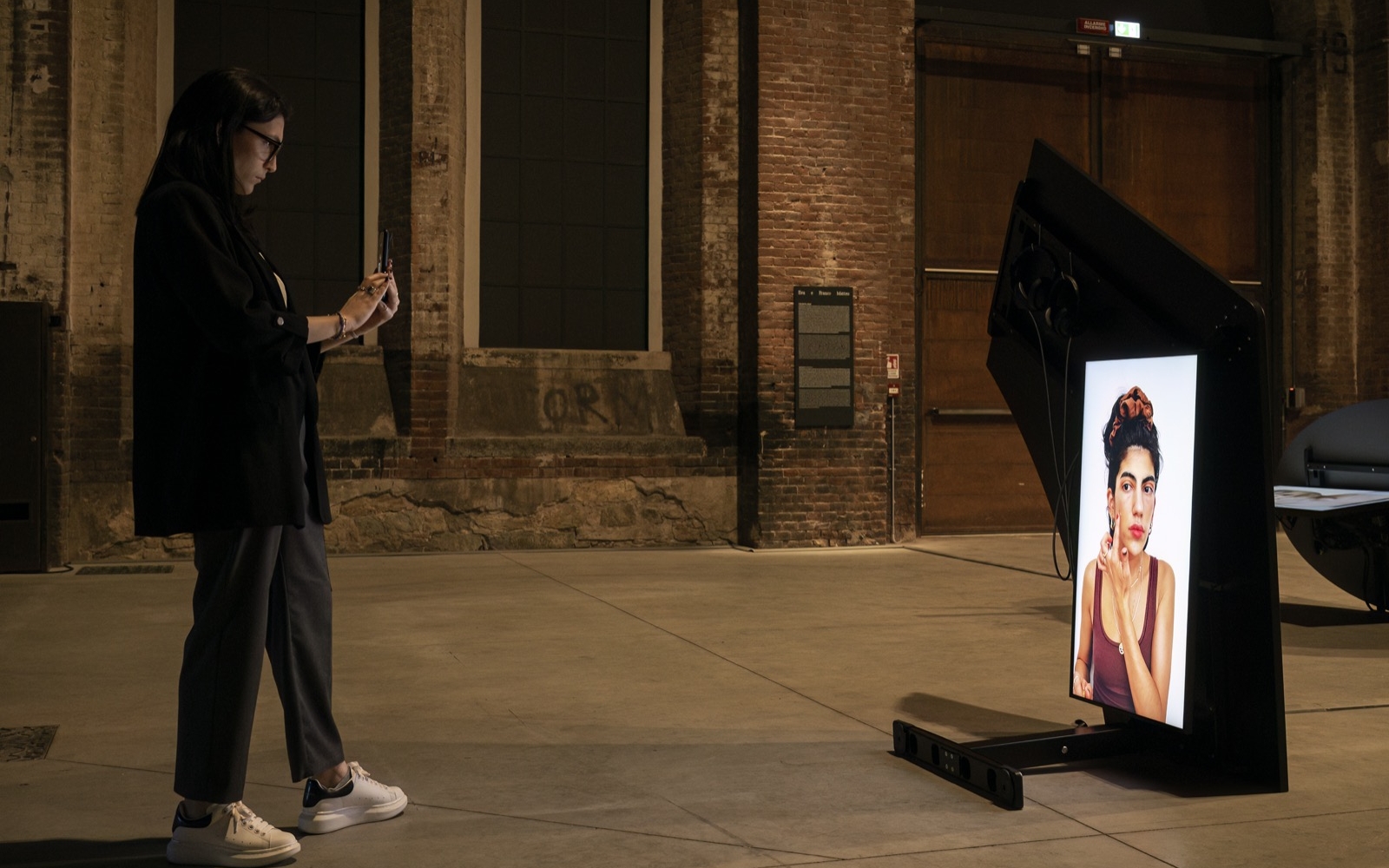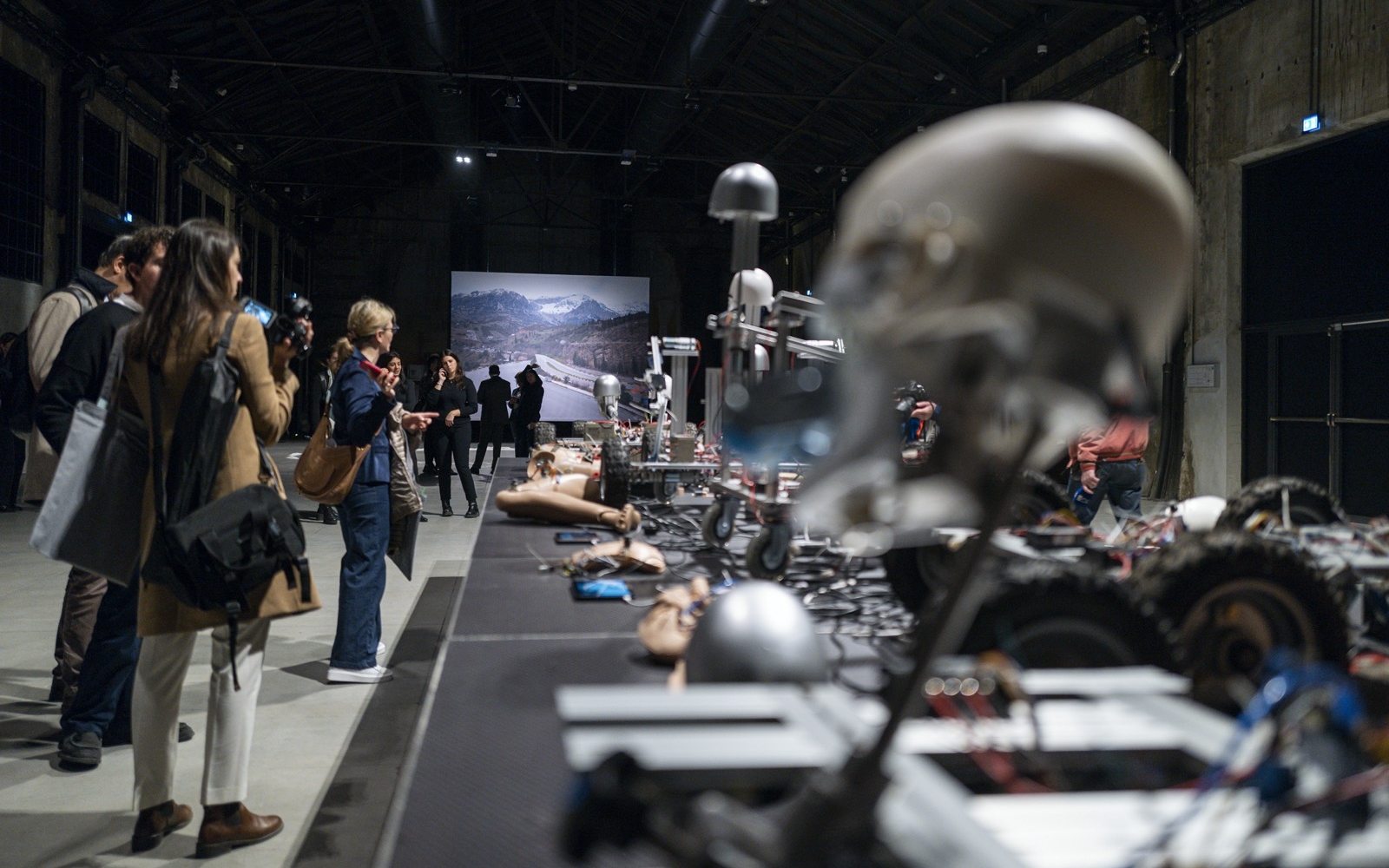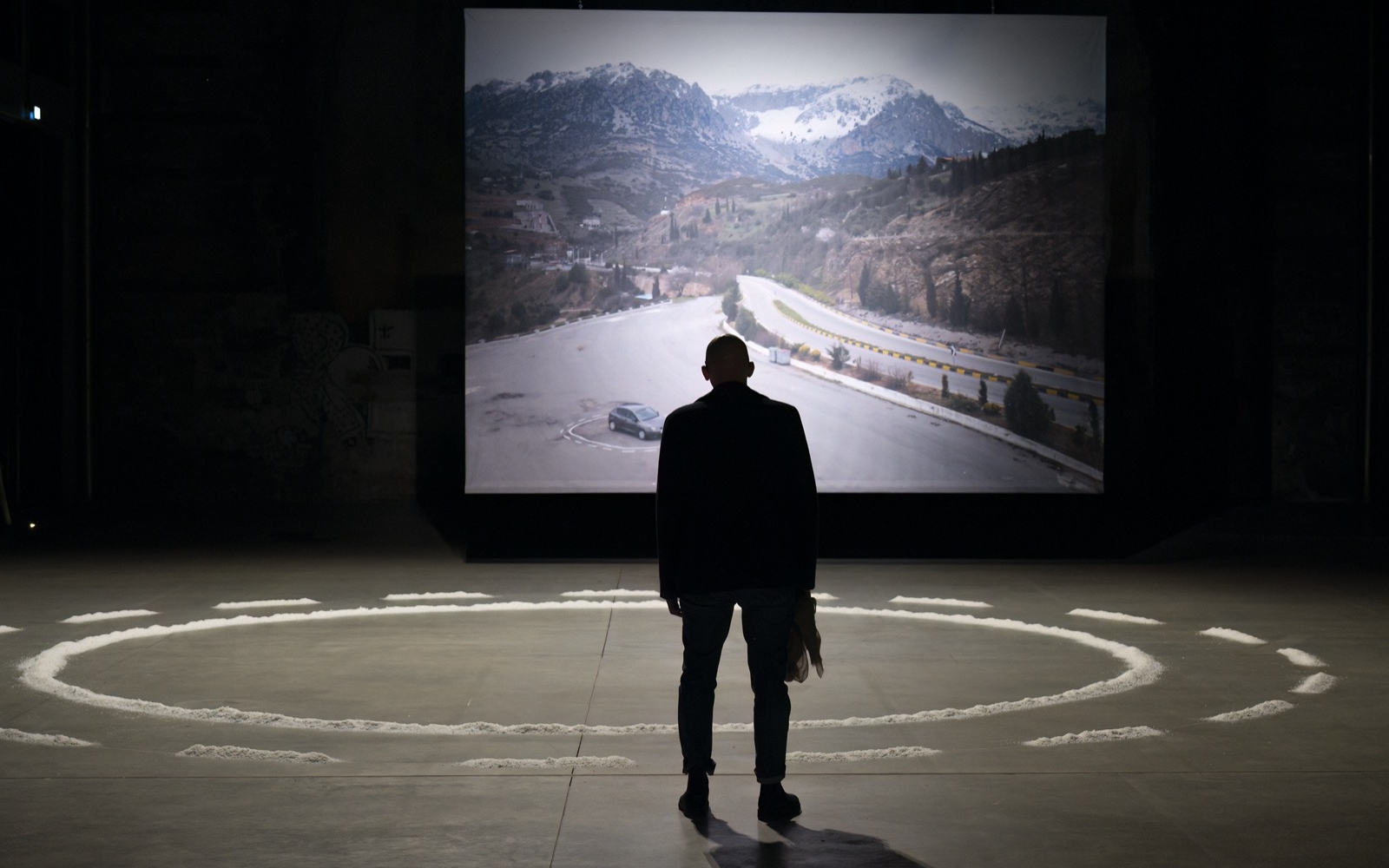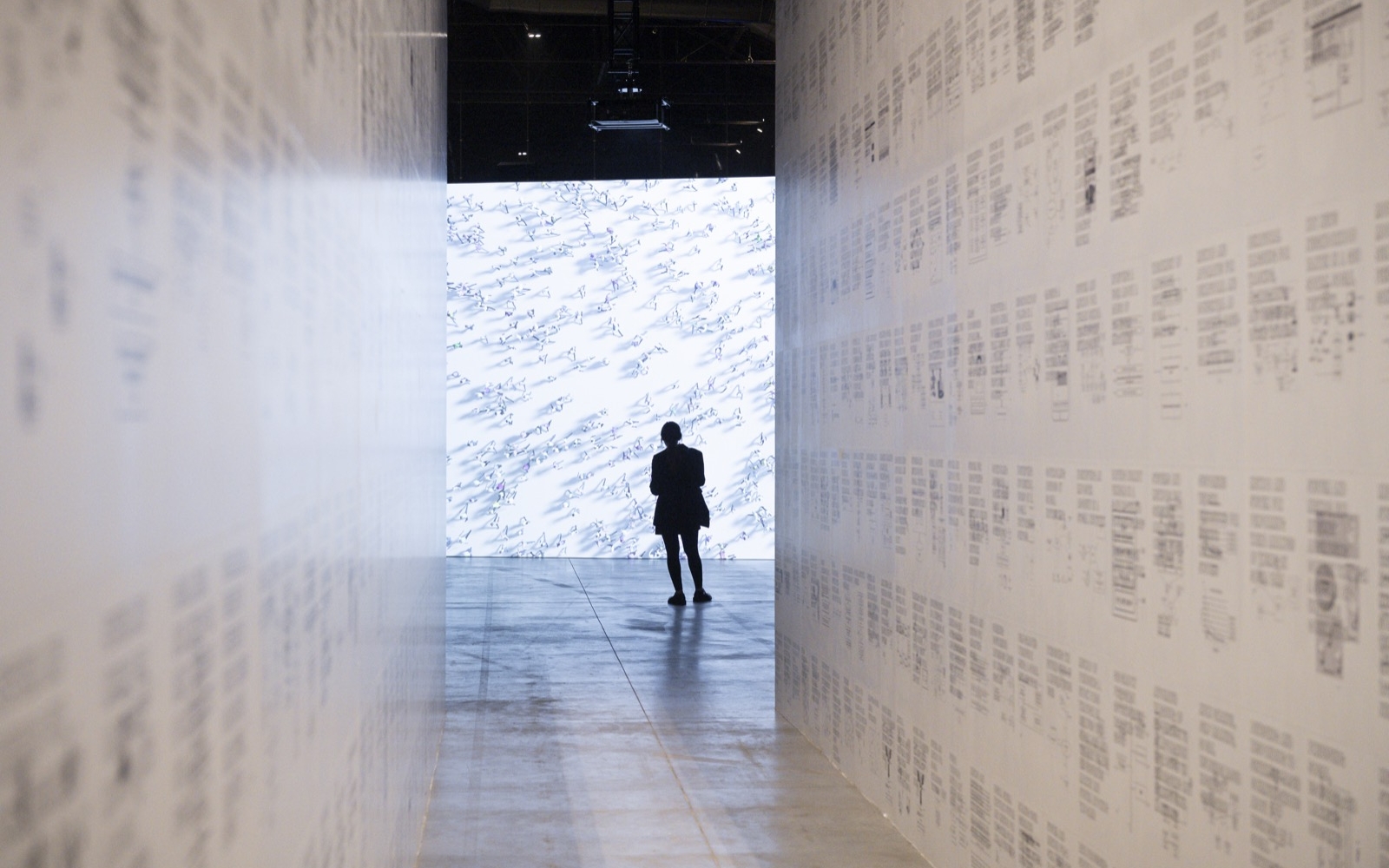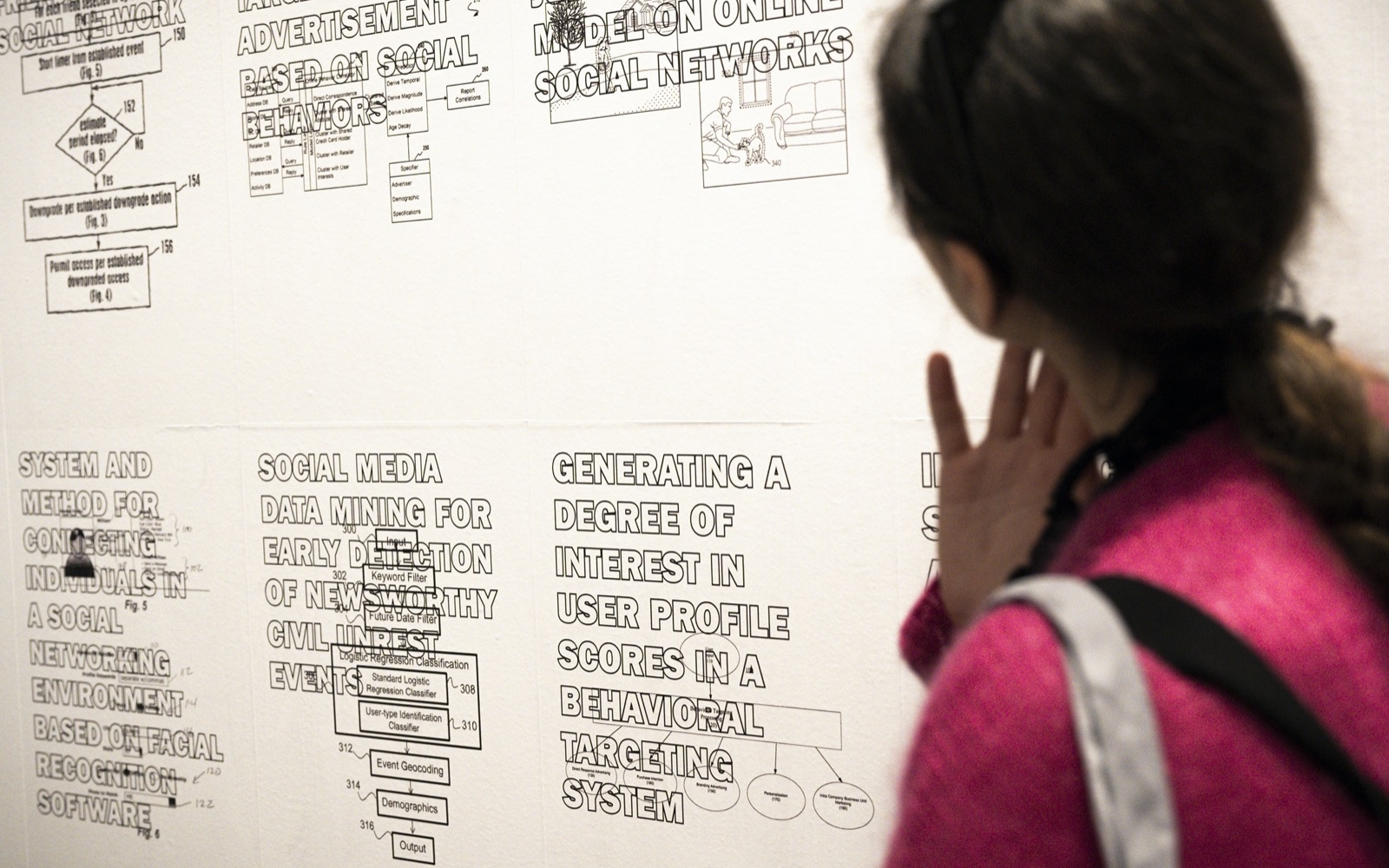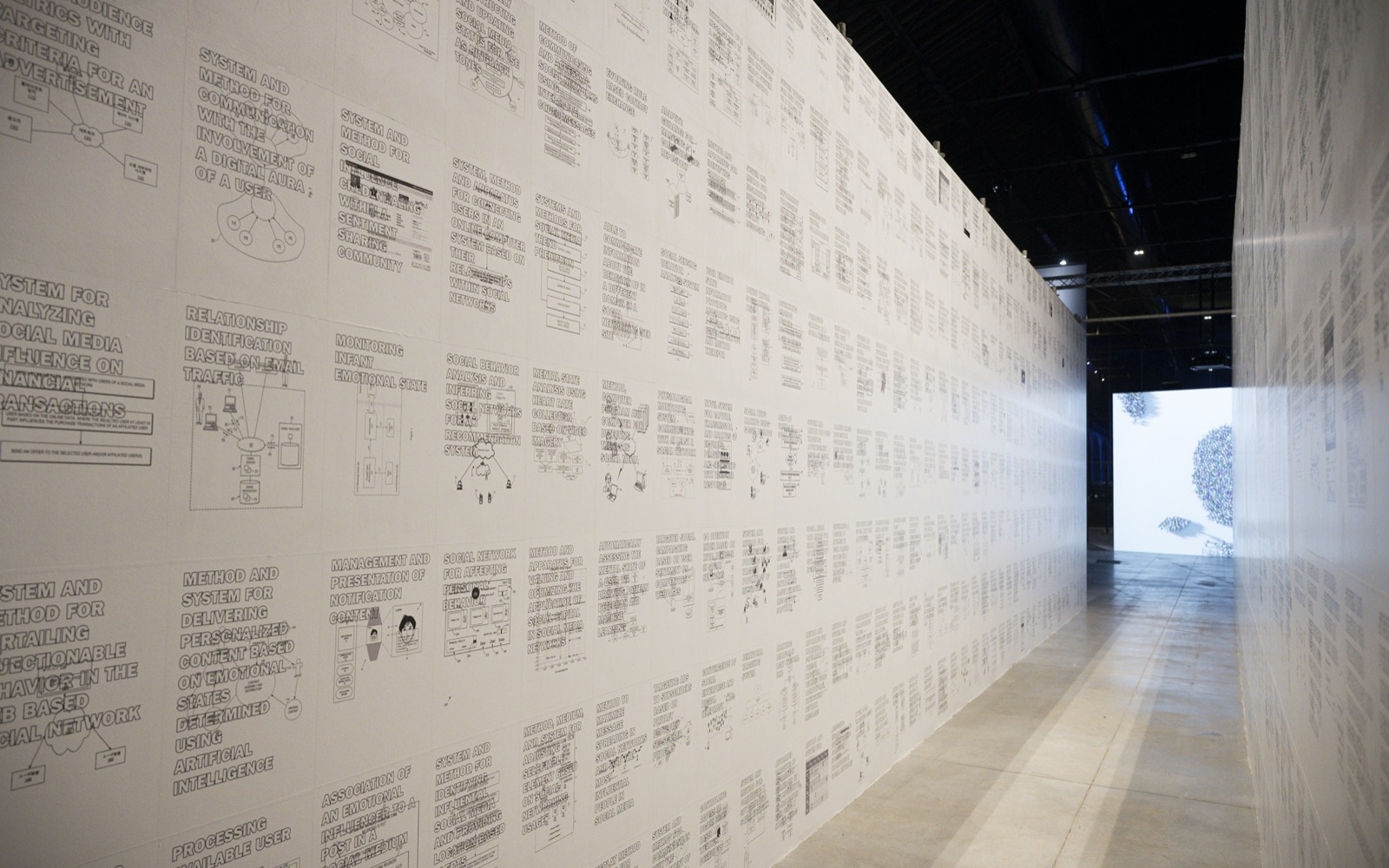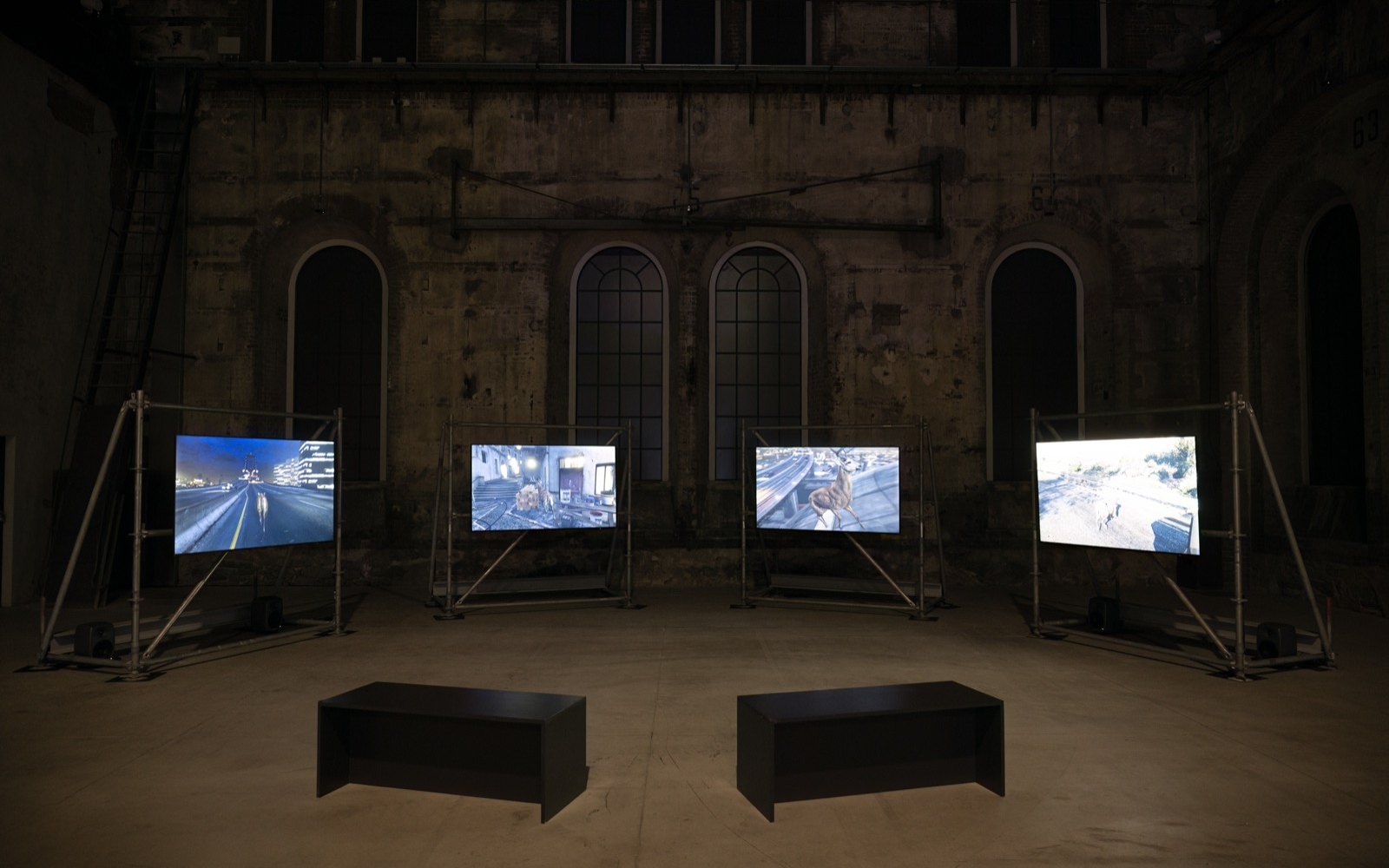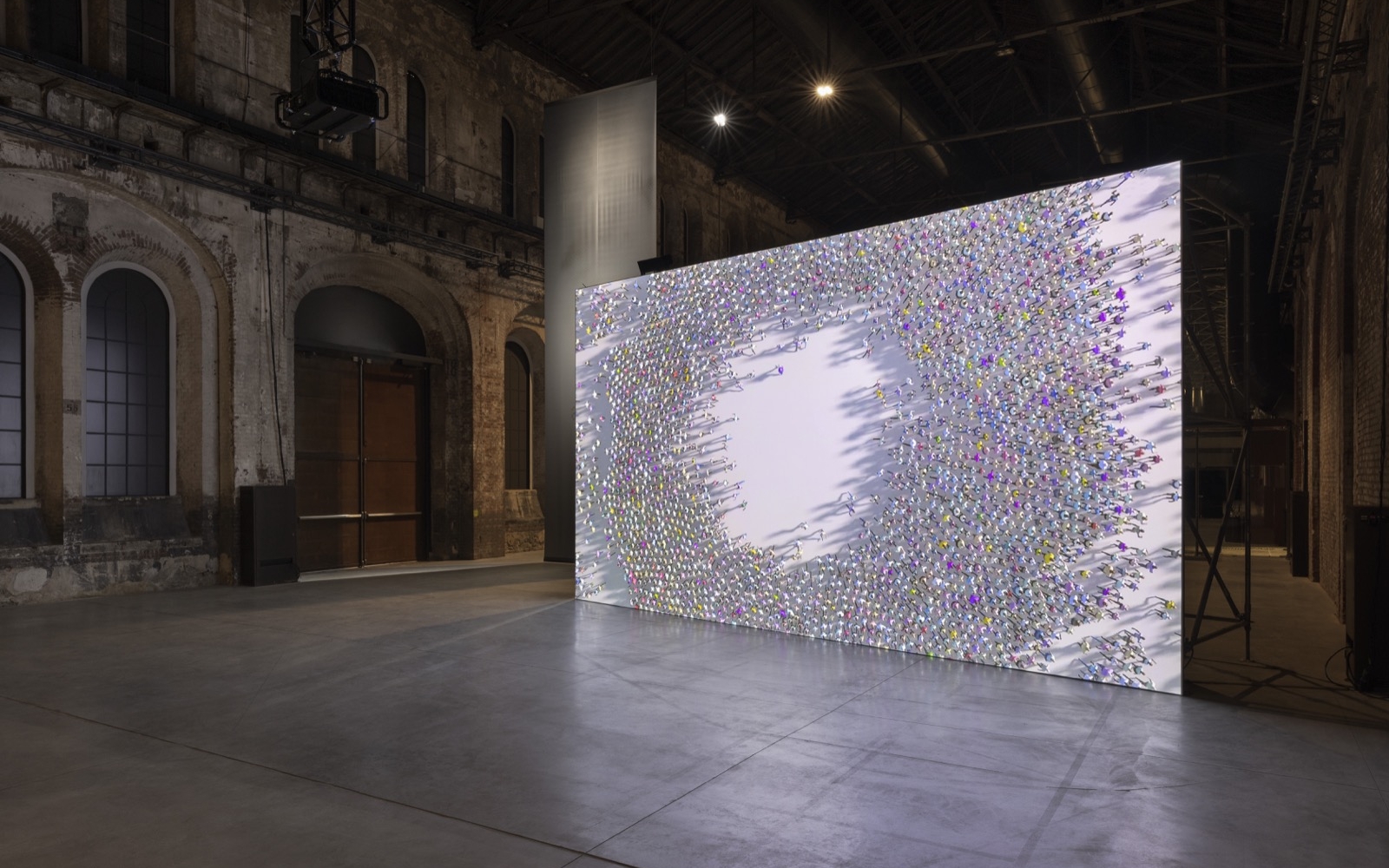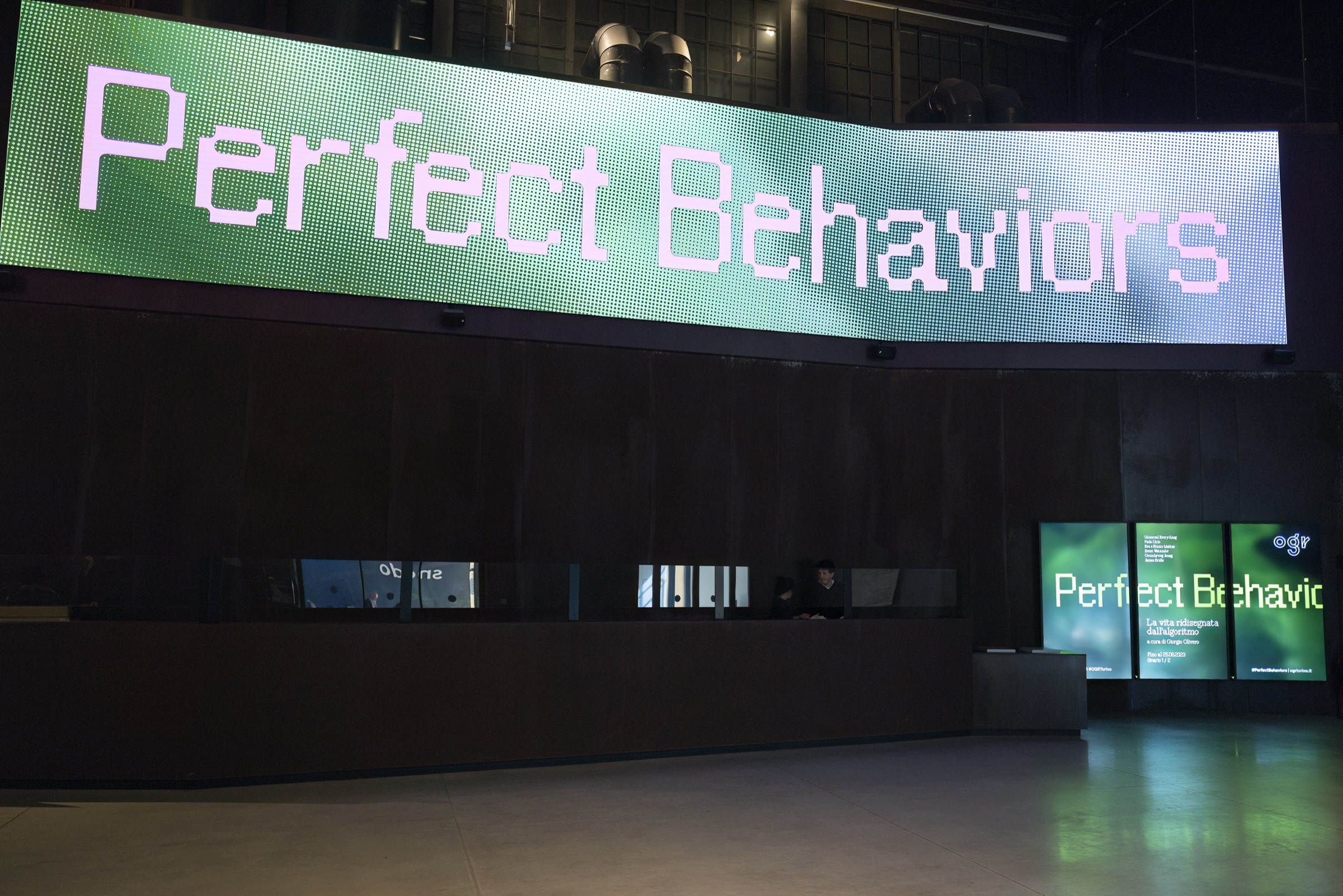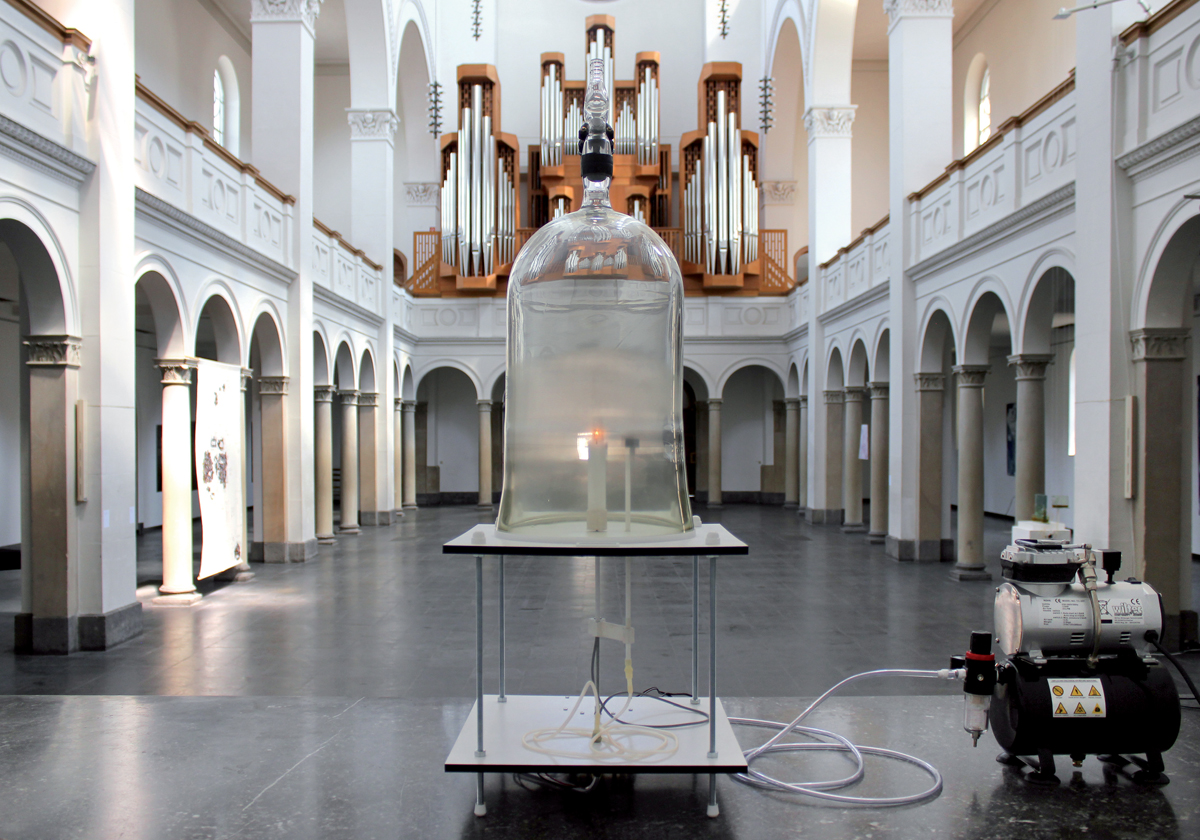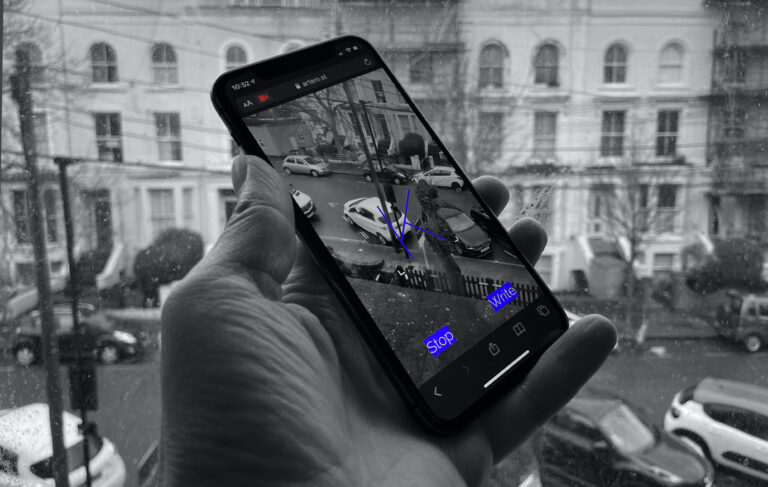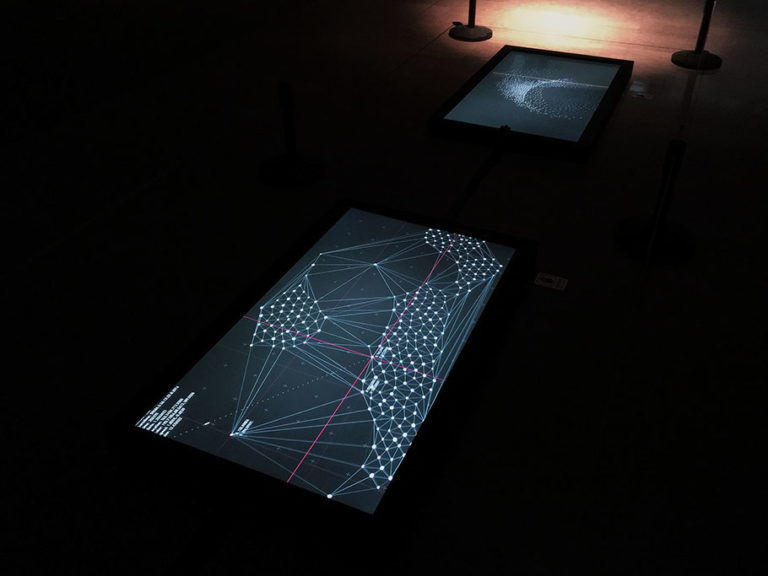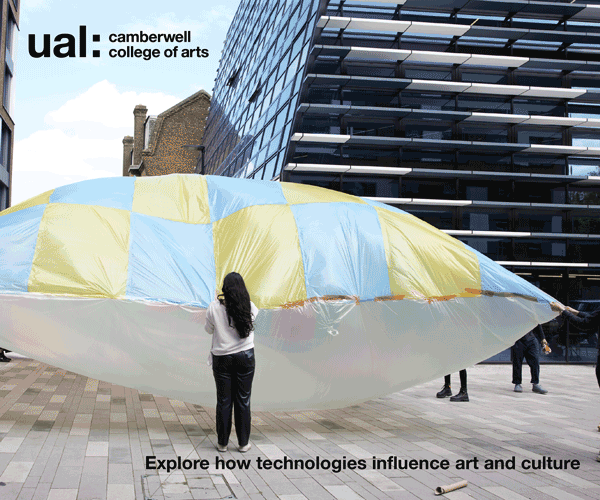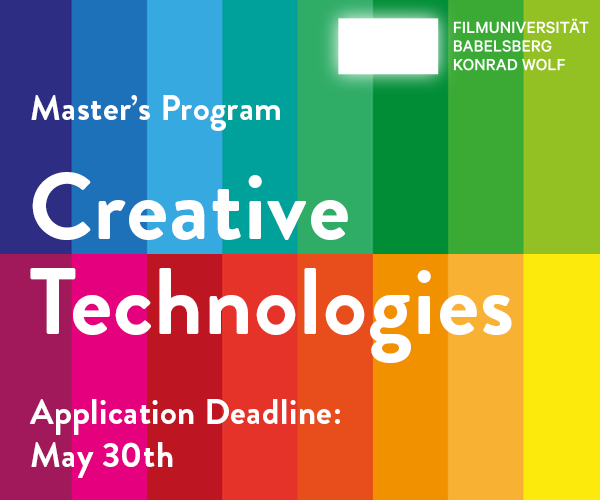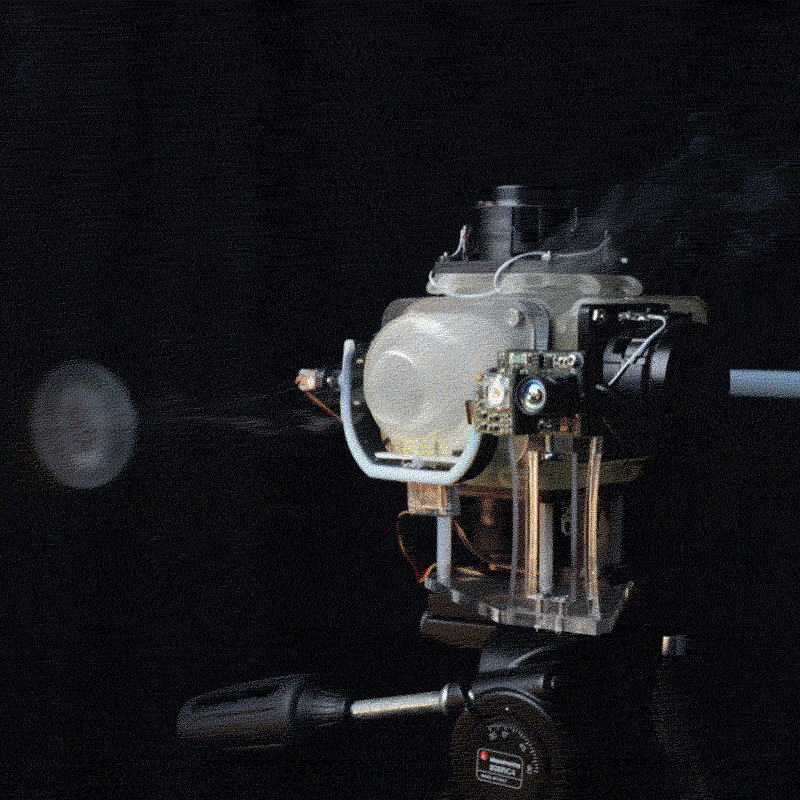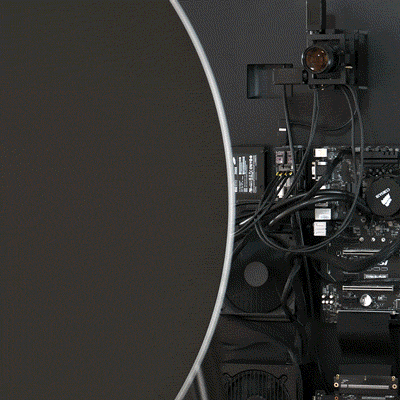On March 29th 2023, numerous artificial intelligence experts and researchers signed a letter requesting to slow down the rapid development of AI solutions. They want the world to have enough time to understand the potential risks and impacts of AI. On the same day, an exhibition called “Perfect Behaviours – life redesigned by the algorithm” curated by Giorgio Olivero opened to the public in Turin, Italy’s OGR Officine Grandi Riparazioni. This coincidence brings up the project’s main theme: we used to be the creators and programmers of perfect machines, intelligent systems that made our work more efficient, and codes that automated our daily lives. However, we have now become the subject of a digital optimization process where algorithms rewrite our individual and collective behaviors. We are like contemporary Prometheuses who are being optimized by technology.
In the past couple of years, various communities in both the art and industry sectors have organized events and conferences on the topic of AI. For example, there have been only 100 events that specifically address the relationship between AI and design. People have discussed ethics in AI, AI-based interfaces, and the need to regulate this rapidly evolving technology in various fields, including education. Given the urgency of this situation, the collective exhibition “Perfect Behaviours” does not explicitly mention AI. However, it aims to bring its contribution to these ongoing discussions, by giving a shape to many considerations on our “future-present”, forging connections among different languages and creating a critical path on multiple themes of our technological society.
The exhibition’s venue itself sets the stage for exploring multiple artistic languages and establishing connections between them. OGR, an industrial site in Italy, was originally built in the 20th century for repairing trains, the transportation technology that played a significant role in redesigning the geography of social relations and in the second industrial revolution. After undergoing requalification works, OGR opened its doors in 2017 and soon it became the home of an incubator for Hi-Tech startups, which are the “unicorns” responsible for developing the technologies that are redesigning our future interactions. The exhibition, “Perfect Behaviors” is situated in areas Binario 1 and 2, which counterpose the incubator’s spaces. This arrangement made visible the counterposition between the current dominant narrative around technology and innovation with the opposing one illustrated by the six installations on display.
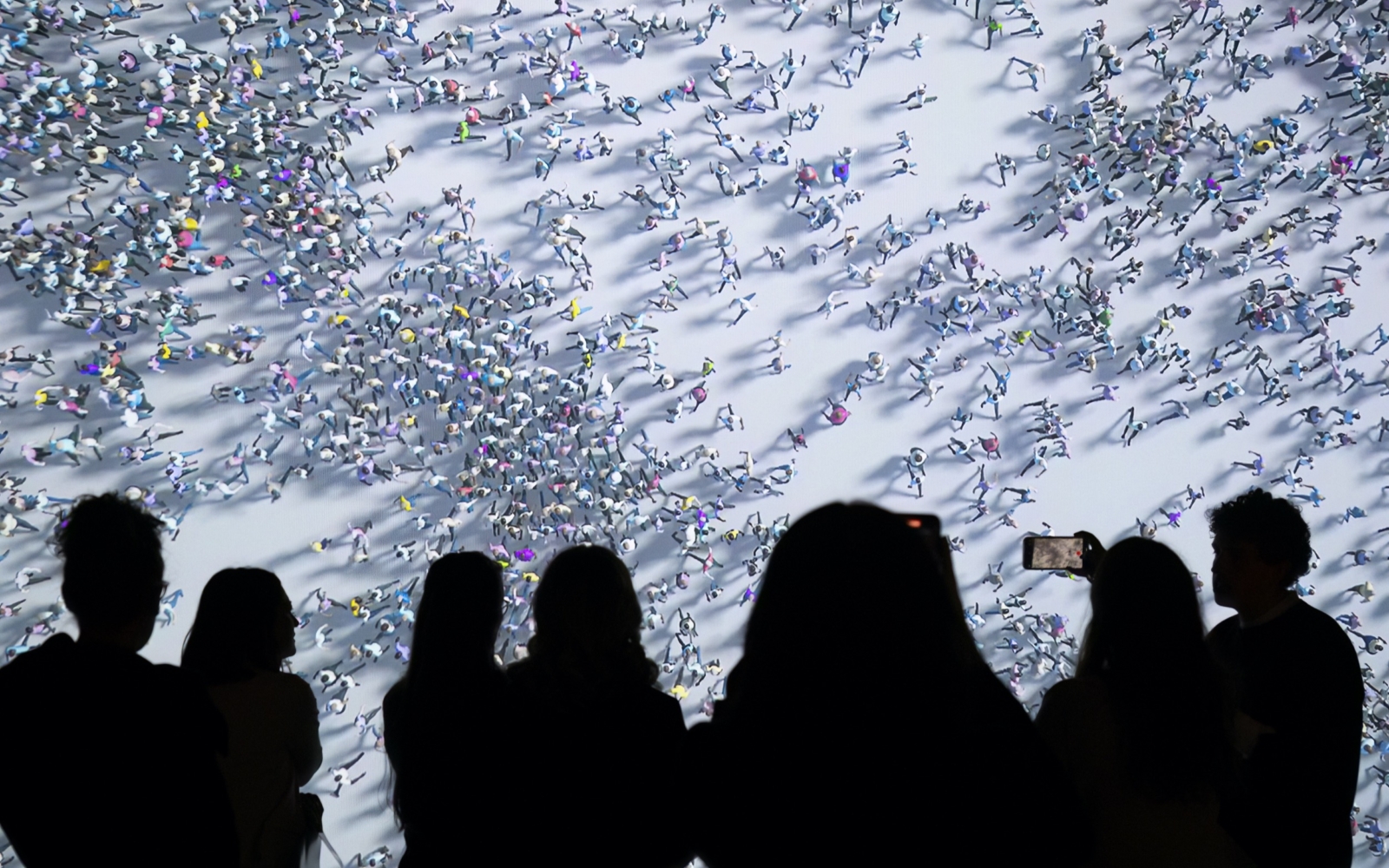
The first installation, titled “Tribes” by the UK-based collective Universal Everything, features a choreographed projection of human figures whose behaviors are orchestrated by crowd simulation algorithms. Universal Everything has always worked on expanded generative art to visualize the relations among society, crowds, groups, individuals, and their mutual influence. Like flocks of birds, the human figures change the direction of their movement in a digital environment, aggregating and separating along trajectories generated by rules whose logic is not accessible to us. While the aesthetics of this pattern are well-known by digital art conneisseurs, its placement at the entrance of the exhibition shifts the center of gravity from a mesmerizing effect to a sad observation. Visitors are confronted with the potential study of people’s manipulation, rather than an experiment in computational graphics.
“What captivates me about Tribes is that it transcends the realm of computer-generated particles and instead it displays people. This computationally sublime illustration portrays what occurs when crowds of people are linked in real-time, and we can anticipate and simulate their behavior, yet also exert control over them in a programmatic way. I appreciate the moments of hypnotic beauty and the tension between that surface layer of the experience and the deeper realization that for centuries we have strived to create puppets capable of pulling their own strings (consider the history of automata, robots, and all kinds of autonomous machines), only to discover that it is far simpler to create puppets out of humans.” Giorgio Olivero, the curator, says.
One of the first interaction designers in Italy (class 2003 IDII Ivrea), former Chief Design Officer at Arduino and now founder of a hypercraft brand, Giorgio Olivero makes his curatorial debut with an exhibition in which he could narrate, with the perspective of a creative technologist, the end of the parabola on the optmistic use of technology as an agnostic tool, divorced from its potentially negative societal impact.
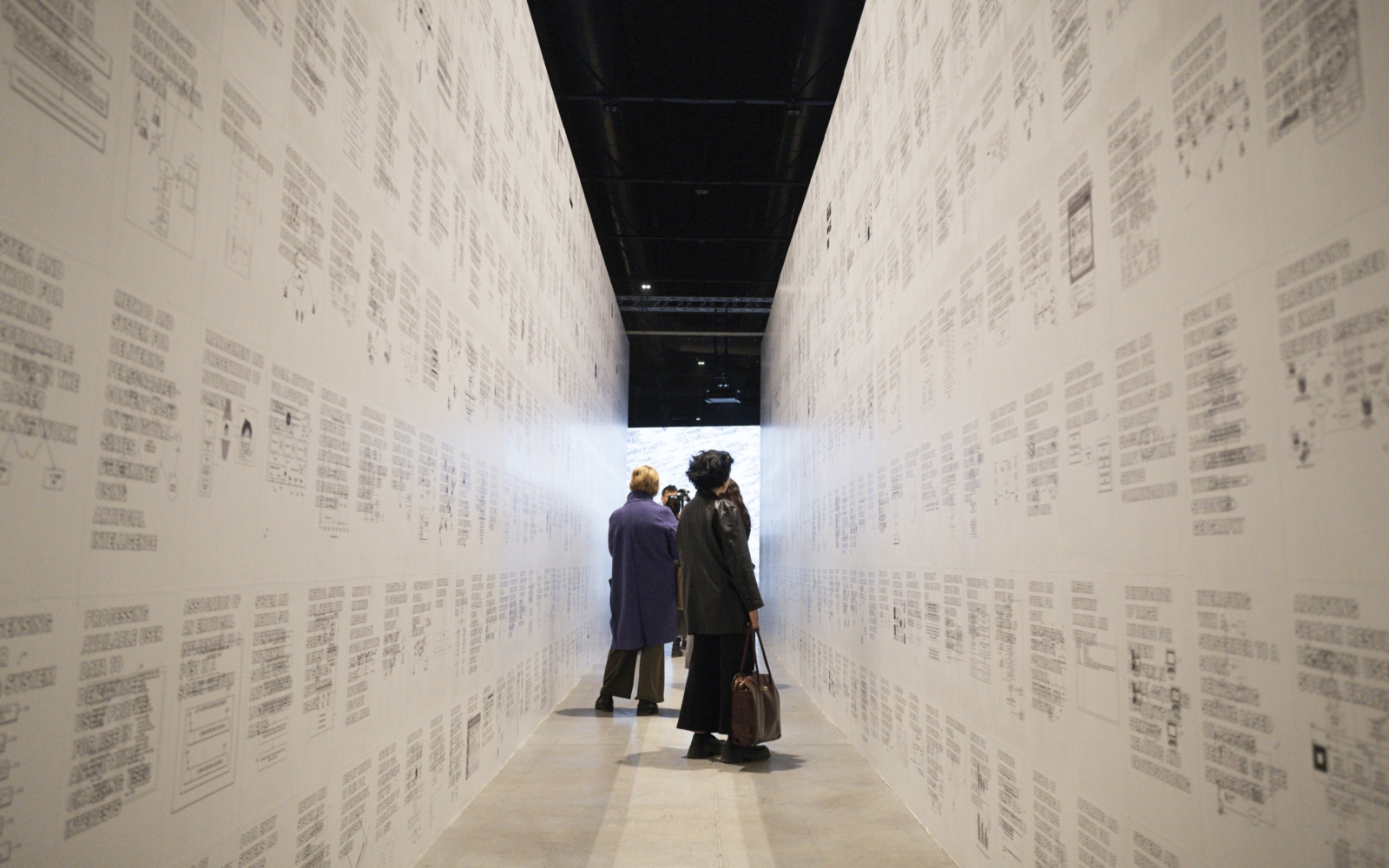
The exhibition’s intent becomes even more apparent in the second installation: Sociality by Paolo Cirio. The exhibit is displayed through an innovative setup consisting of two walls, forming a long corridor that directs visitors’ attention to a collection of digital prints. Each print showcases the title of a patent for technology that intentionally aims to analyze, classify, and manipulate people’s behavior. Winner of an Honorary Mention from STARTS Prix Ars Electronica 2020, Paolo Cirio created Sociality with the goal of producing a piece of regulatory art. The artist collected, organized, and made available patents scraped from Google Patents. Through a website, he encourages people to identify those patents that deliberately generate a manipulative, discriminatory, addictive, or surveillance effect. Thus, the installation represents the strive for a collective governance system that regulates the intellectual property related to human control and fills the gap created by governments and institutions that failed to regulate fundamental domains such as health, work, media, and technology itself.
After experiencing Sociality, Franco and Eva Mattes’ work The Bots unveils the repercussions of this unregulated technological advancement. The Bots is a video installation featuring three make-up tutorials. While providing step by step makeup advice, three actors perform anonymized versions of the interviews to Facebook content moderators. The tutorials-interviews are the results of a research project of one year carried out by the journalist Adrian Chen, while the format make-up tutorials is borrowed by activists actions by Feroza Aziz on TikTok who used this social media trend to conceal political messages from the platform’s censorship. The Bots sheds light on the emergence of new ‘professions’ as digital platform byproducts: alienated individuals who beautify the contents that we produce and consume as unaware spectators of an algorithmic stream of stories.
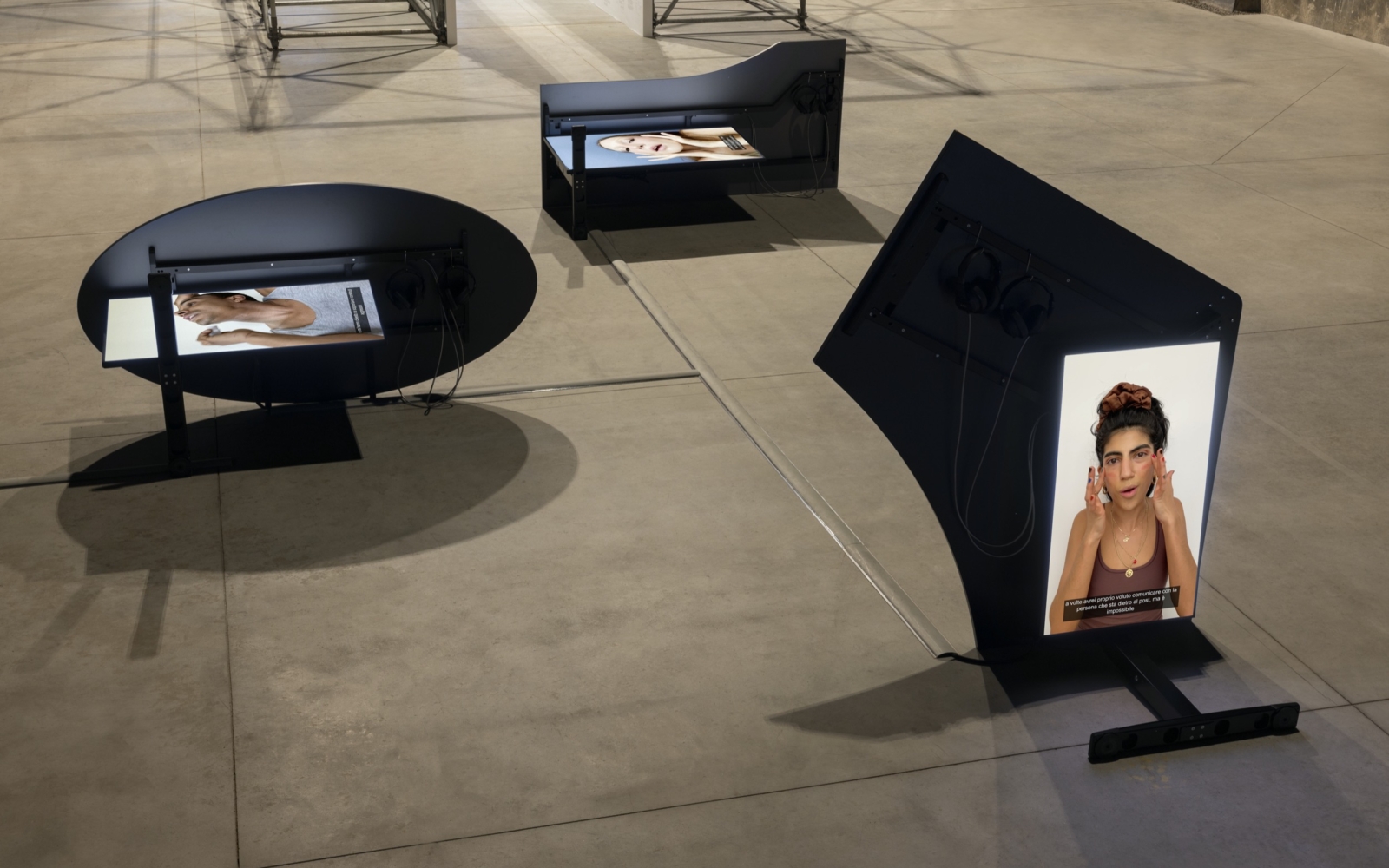
The condition of unaware spectators becomes the status of an audience without any real control over technology in the work by Brent Wanatabe. In this fourth installation the modified version of Grand Theft Auto V presents a deer as the player, living and interacting within the game world as an autonomous agent, creating chaos and generating errors. The resulting footage from the deer’s adventures streamed on Twitch is displayed on four screens, revealing its journey around the city as it crashes into cars, falls into water, and gets killed by the police. This synthetic world, automatically configuring itself without any outside influence, serves as a reminder of our powerlessness as mere observers of autonomous agents struggling to negotiate with and within each other.
As we progress through the exhibition space, the intention becomes increasingly clear: to showcase different approaches to interpreting our technological present and future. In the second exhibition room, Binario 2, we encounter the DIY toys of Korean artist Geumhyung Jeong. Made in an amateurish style using motors and microprocessors, these performative machines may appear unintelligent, moving awkwardly and slightly avoiding the Uncanny Valley effect. Toy Prototype features mannequin controllers with joystick interfaces and it maybe the only installation helping us reconcile our ambivalent relationship with robots.
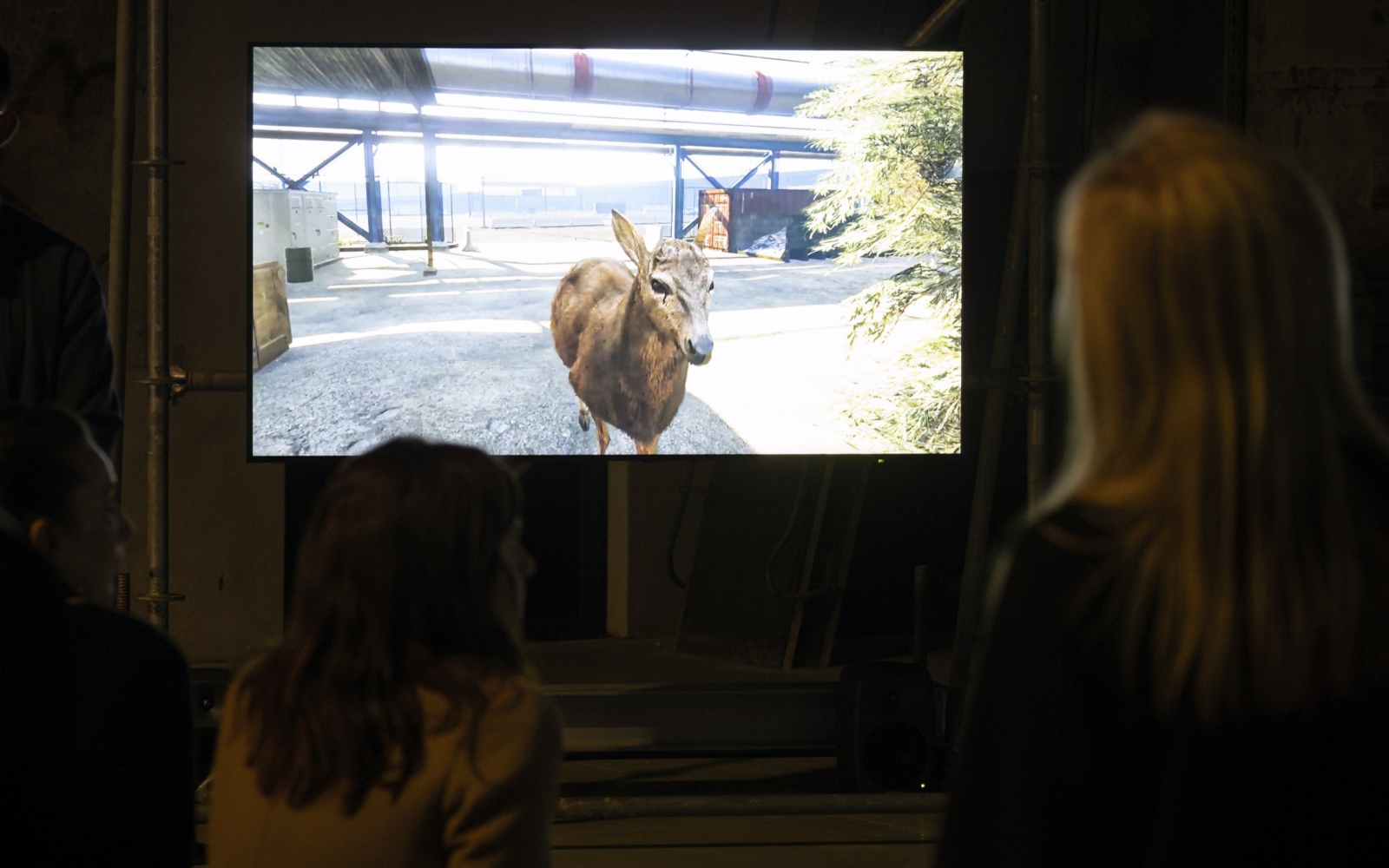
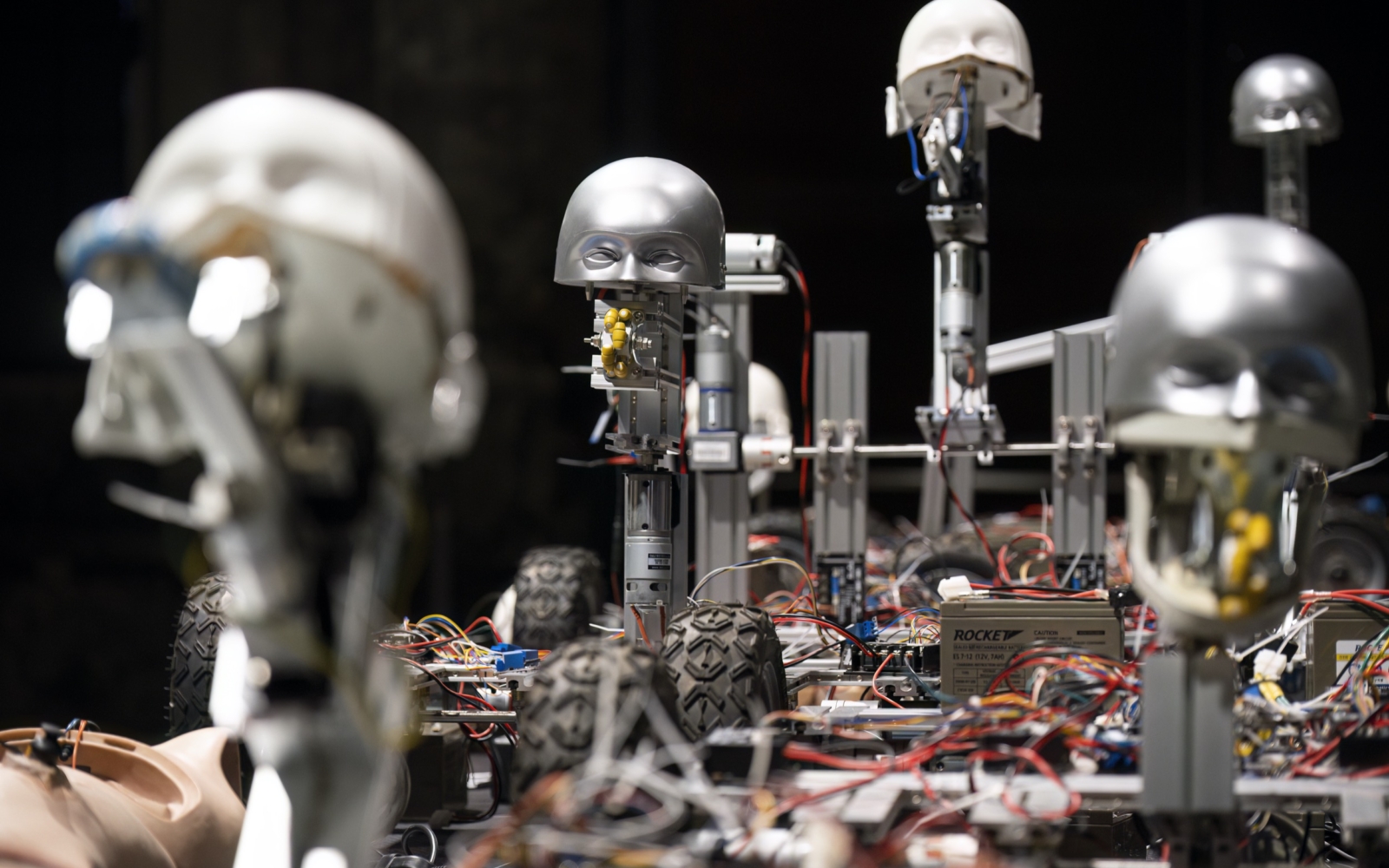
The final installation takes us to the hidden and magical side of the algorithms controlling self-driving cars, as envisioned by James Bridle in Autonomous Trap 001. Bridle is well-known for his various formats in exposing the darker side of our technologically optimistic age, including books and talks. But his stance on how our lives are designed by algorithms can really be summarized in this image: a self-driving car trapped in a salt circle that recreated a street signs in a parking area near Mount Parnassus in Greece. It is a mythological story in the form of an image that compiles all the symbolism describing the dominant technological determinism.
Giorgio Olivero explains “It’s a kind of sci-fi without special effects. James Bridle offers us a fair warning about a present where autonomous machines co-exist with us and everything else. Since our reality has become machine readable through the collection of infinite data, machines have learned, a lot. Now we find ourselves dealing with machines agency. A few weeks after the exhibition opening Dr. Geoffrey Hinton, one of the inventors of Deep Learning, warned technology owners not to scale it up any further until they understand whether they can control it. Similarly, James Bridle’s work provokes us on how we can collectively strategize modes of resistance for an age of world computation”
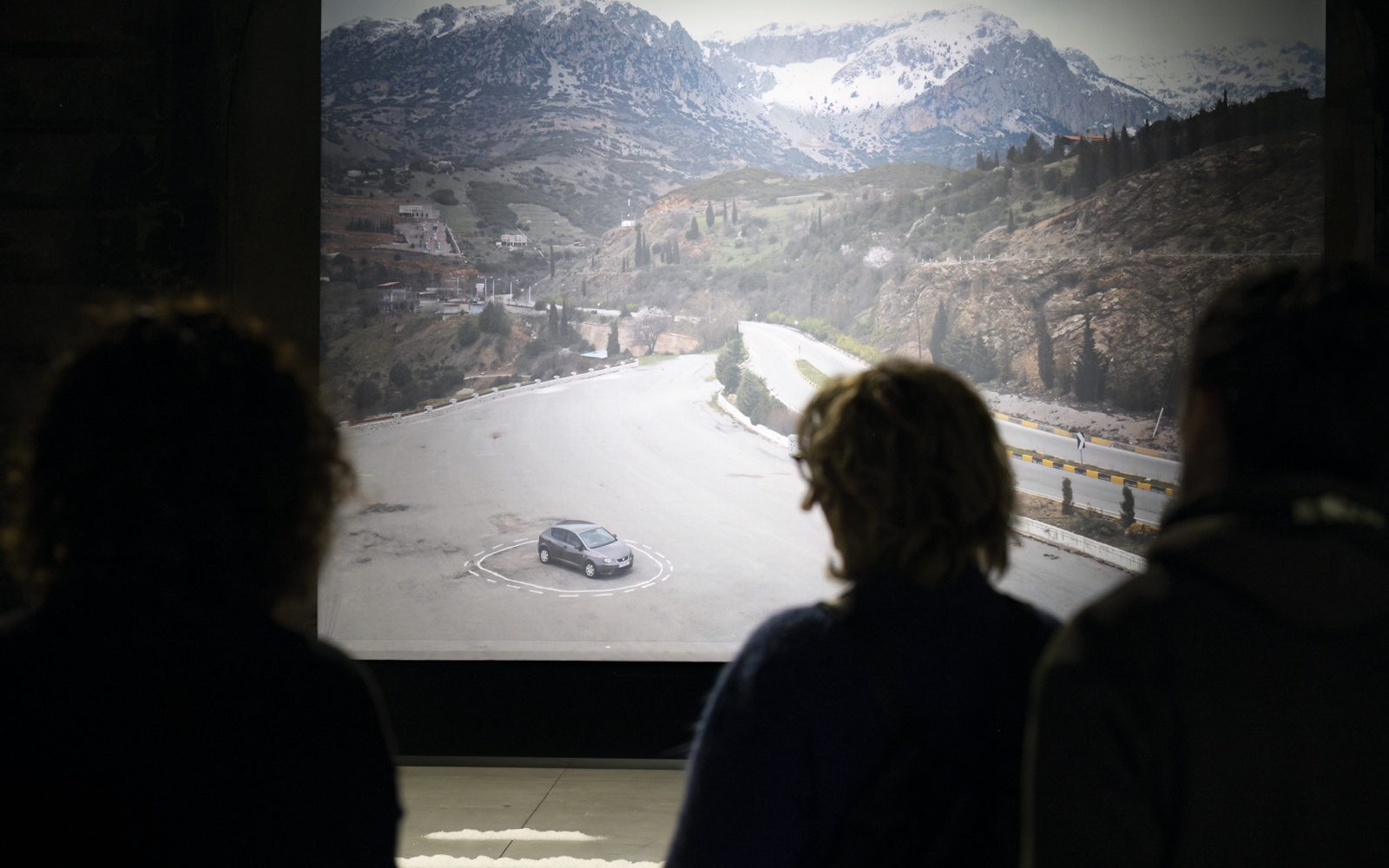
As the curator writes, the artists showcased in the exhibition write software, design interactions, program mechanism “with the goal of understanding machines as much as machines already understand us. Their works help us imagine different worlds and uncover what exists behind, and beneath, the cloud.”
And perhaps the most compelling aspect of Bridle’s work is his approach to creating a self-driving car through do-it-yourself methods, which serves as a means of comprehending the rules and the limitations that are being embedded in this technology. By doing so, Bridle offers a strategy for reclaiming ownership and control over its rewriting, and thus, the rewriting of our future.
Exhibition Website | Exhibition Brochure
Perfect Behaviors. Life redesigned by the algorithm – A group exhibition curated by Giorgio Olivero / OGR Cult | Binario 1 and 2 / March 29 to June 25, 2023 / OGR Torino, Corso Castelfidardo, 22, 10128 Torino – Italy
